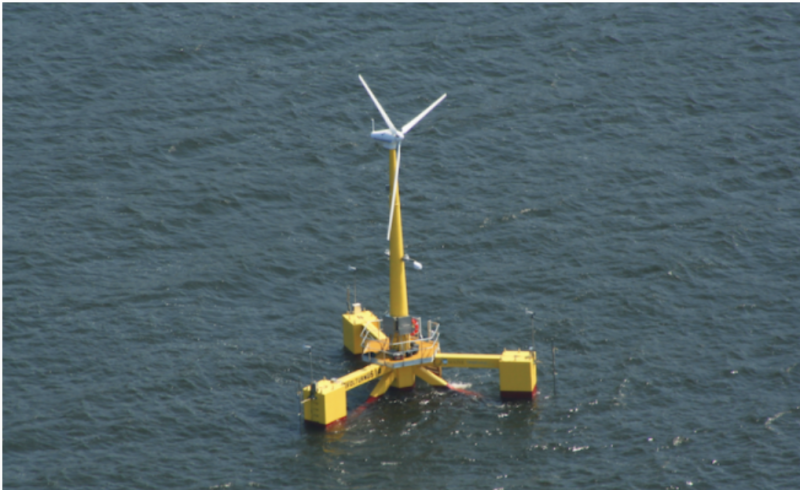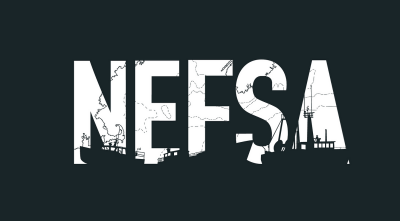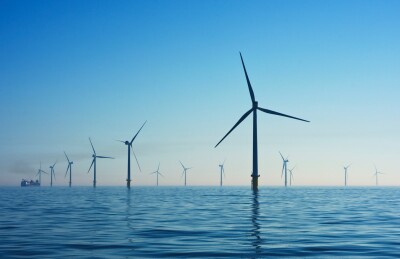National Fisherman Viewpoints- The following op-ed article presents the personal viewpoints of the author and does not necessarily reflect the opinions or positions of the publication, its editors, or its affiliated organizations. The author's perspectives are presented here as a means of fostering open dialogue and diverse discourse on the topic at hand. The publication does not endorse or take responsibility for the accuracy, completeness, or implications of the content within this article. Readers are encouraged to critically engage with the ideas presented and to form their own informed opinions based on a range of sources and perspectives.
The New England Fishermen’s Stewardship Association (NEFSA) released an “Offshore Wind Research Summary” on Monday – a compilation of existing scientific research on the environmental impacts of offshore wind power development.
An alliance comprised of the Downeast Lobstermen’s Association, the Maine Lobstermen’s Association, the Maine Coast Fishermen’s Association, the Maine Lobstering Union, the Long Island Commercial Fishing Association, New England Young Fishermen’s Alliance, New Hampshire Commercial Fishing Association, Responsible Offshore Development Alliance all signed on to the NEFSA letter urging federal and state governments to pause offshore wind development plans in the Gulf of Maine.
NEFSA and many other organizations in Maine are pushing for a delay on any offshore wind development until an environmental review of its impacts is completed. This appeal comes shortly after Gov. Janet Mills’ recent signing of a bill that will begin the process of construction of a port on the coast of Maine that is specifically designed to facilitate a proposed offshore wind buildout.
The fishermen’s alliance wants to draw attention to the U.S. Commerce Department’s National Oceanic and Atmospheric Administration (NOAA) 388-page document attempting to synthesize the existing research on how offshore wind will further impact fisheries.
This research was released back in March by the Northeast Fisheries Science Center in Woods Hole, Mass. It highlighted the impacts that large cables would have as they lie on the seabed and bring electricity from offshore turbines to shore and the electromagnetic field effects around those cables. Scientific studies from Europe's North Sea and U.S. researchers have shown several concerns for commercially important fish such as Atlantic haddock and crustacean species.
According to an article by PNAS Nexus, High-voltage direct current (HVDC) subsea cables transport power between locations and from/to nearshore and offshore facilities. The installation and operation of these cables isn't a small endeavor, which has organizations such as NEFSA asking questions on behalf of fishermen about how such activities might impact marine life. HVDC cables produce magnetic fields (B-fields) that could impact marine fish. Atlantic haddock larvae drift over the continental shelf and use the earth’s magnetic field for orientation during dispersal. This puts them at risk of exposure to anthropogenic B-fields after evaluating the intensity range that subsea cables will produce.
A 2022 study found that most (78 percent) of larvae were nonexploratory, and exposure to the artificial B-field reduced their median swimming speed by 60 percent and decreased their median acceleration by 38 percent. These observations support the conclusion that the selective impact on nonexploratory individuals and the lack of impact on exploratory individuals could have population-scale implications for wild haddock.
A study done by the Bureau of Ocean Energy Management back in 2018 called The Electromagnetic Field (EMF) Impacts on Elasmobranch (shark, rays, and skates) and American Lobster Movement and Migration from Direct Current Cables found that despite the potential for mutual benefits to developers and fisheries, the risk of displacement to fishing industries and 64 practicalities of co-benefits need to be addressed. These concerns had also arisen when planning offshore floating wind in the U.S., specifically regarding lobsters. The first step to resolving potential conflict was to determine if there is a risk of lobsters changing their behavior in response to electricomagnetic fields (EMFs) from cables associated with marine renewable energy.
The New England Fishermen's Stewardship Association chief operating officer and commercial fisherman Dustin Delano tells National Fisherman, “NEFSA is committed to protecting fisheries, habitat, ocean life, and the heritage of our coastal communities as the government recklessly pushes forward with commercial development in the Gulf of Maine. The potential for irreversible, irrevocable harm to the ocean ecosystem in the Gulf of Maine is very probable as BOEM pushes forward with commercial wind energy areas before necessary scientific studies have been completed.”
American lobsters and Atlantic haddock are two important fisheries within the Gulf of Maine, and the fear among fishermen is prominent. Their livelihoods could be at risk due to the implementation of offshore wind developments and the environmental impacts that the HVDC could have on these species. You can find the NEFSA Coalition letter here. NEFSA and the fishermen’s alliance hope to help protect the fishing heritage that supports hundreds of thousands of jobs among the New England coastal communities.







